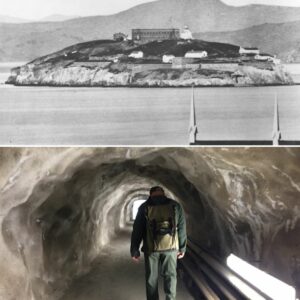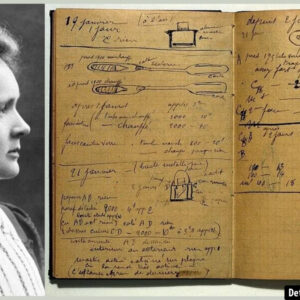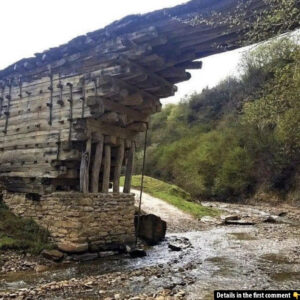Mount Rushmore, one of America’s most iconic landmarks, is more than just a monument; it’s a story etched in granite. The colossal faces of four U.S. presidents—George Washington, Thomas Jefferson, Theodore Roosevelt, and Abraham Lincoln—serve as a symbol of the nation’s history, ideals, and progress. But behind this monumental creation lies a fascinating journey of challenges, vision, and dedication. Through rare photographs capturing its construction, we can witness the effort and artistry that shaped this American masterpiece over 14 years, making Mount Rushmore a testament to both human ambition and the spirit of democracy.
The Origins: A 1923 Idea Becomes Reality
The idea for the Mount Rushmore National Memorial was first proposed in 1923 by Doane Robinson, a South Dakota state historian. Robinson’s initial concept was to carve the likenesses of famous American Old West figures and Native American leaders into the needles of granite spires at Custer State Park. However, Gutzon Borglum, the renowned American sculptor hired to lead the project, quickly rejected Robinson’s suggestion. The rock formations at Custer State Park were too unstable to support such a massive undertaking, so Borglum chose nearby Mount Rushmore for its solid granite rock face, perfect for such a grand vision.

Borglum’s design aimed to represent the first 150 years of the United States, with each president chosen for their symbolic representation of a pivotal moment in American history: George Washington, the nation’s founding; Thomas Jefferson, the expansion of the United States; Theodore Roosevelt, the country’s development domestically and internationally; and Abraham Lincoln, the preservation of the Union through the Civil War.
Video
Watch the video to learn how Mount Rushmore was originally intended to look very different.
Construction Begins: The Early Years (1927-1930)
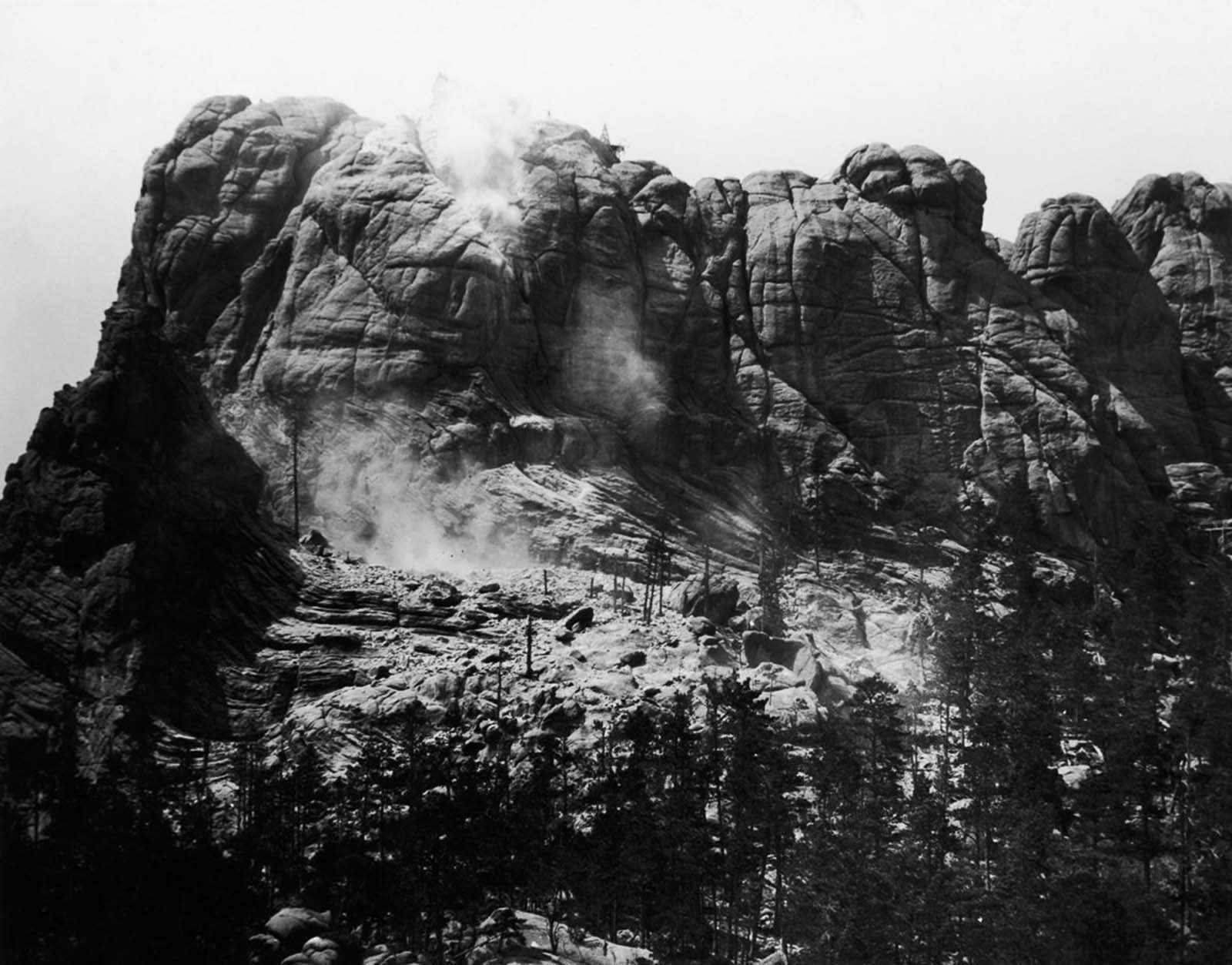
The construction of Mount Rushmore officially began on October 4, 1927, with Gutzon Borglum and a team of workers setting to work on the massive project. This was no ordinary undertaking—carving such colossal faces required innovation and labor on an unprecedented scale. Workers used dynamite to blast away large sections of rock, followed by more precise chiseling to shape the faces into the detailed likenesses of the presidents. Borglum’s technique involved blasting away much of the rock, drilling thousands of closely spaced holes, and then chipping away the remaining material until the surface was smooth.
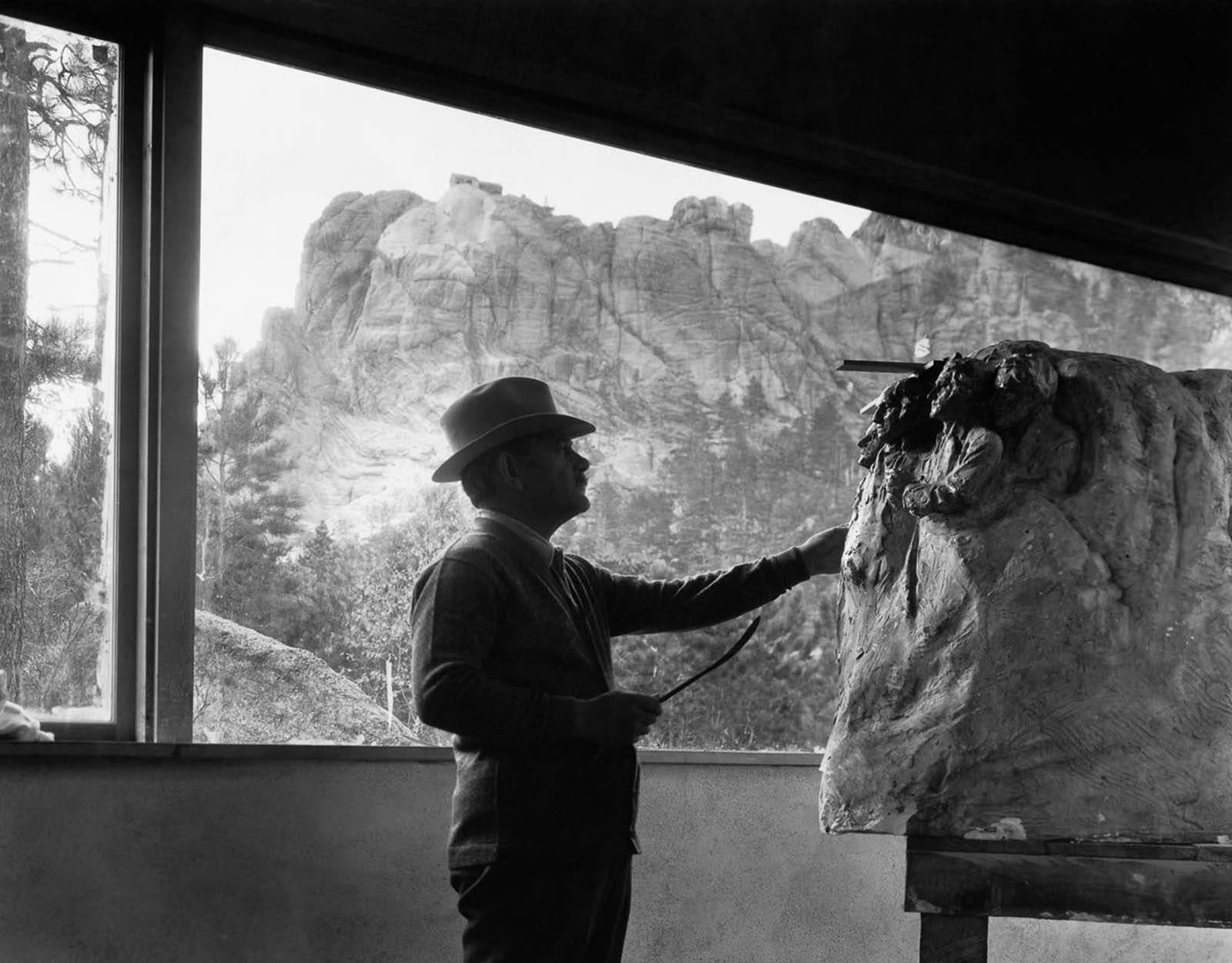
Among the earliest and most notable achievements was the dedication of George Washington’s head in 1930. Borglum’s skillful handling of the massive stone structure was evident in the first completed head, marking a pivotal moment in the project’s timeline. However, it was not without challenges. In addition to technical difficulties, progress was often hindered by inconsistent funding and the complexity of ensuring the likenesses were accurate.
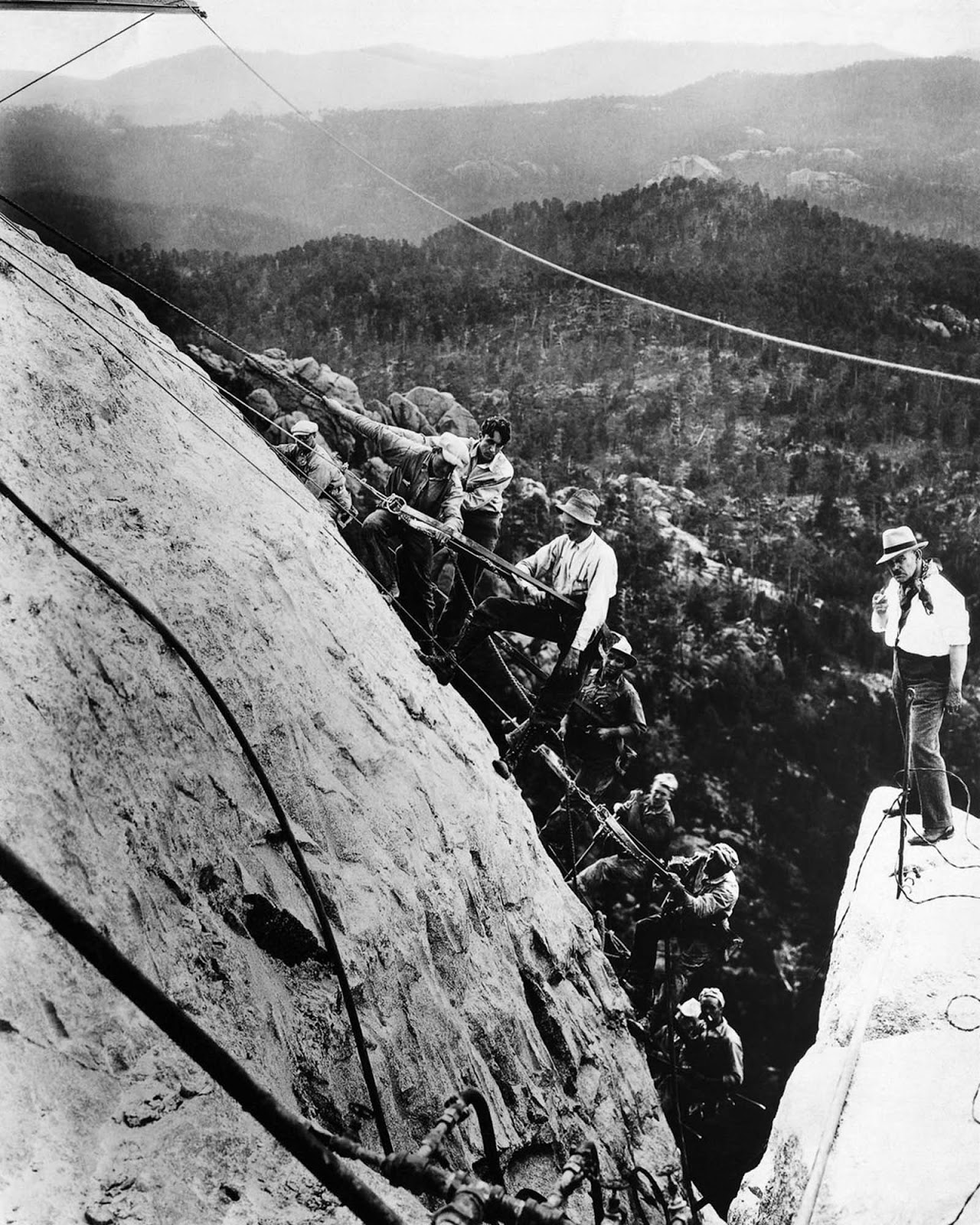
Midway Progress: Design Issues and Setbacks (1930-1939)
As the years passed, the project began to face more complicated design and technical challenges. One of the most significant issues arose with the likeness of Thomas Jefferson. Originally, Jefferson was to be carved to the right of George Washington, but Borglum determined that the rock quality on that side of the mountain was not ideal. Jefferson’s face had to be completely re-carved on the opposite side of Washington’s, delaying the progress significantly.
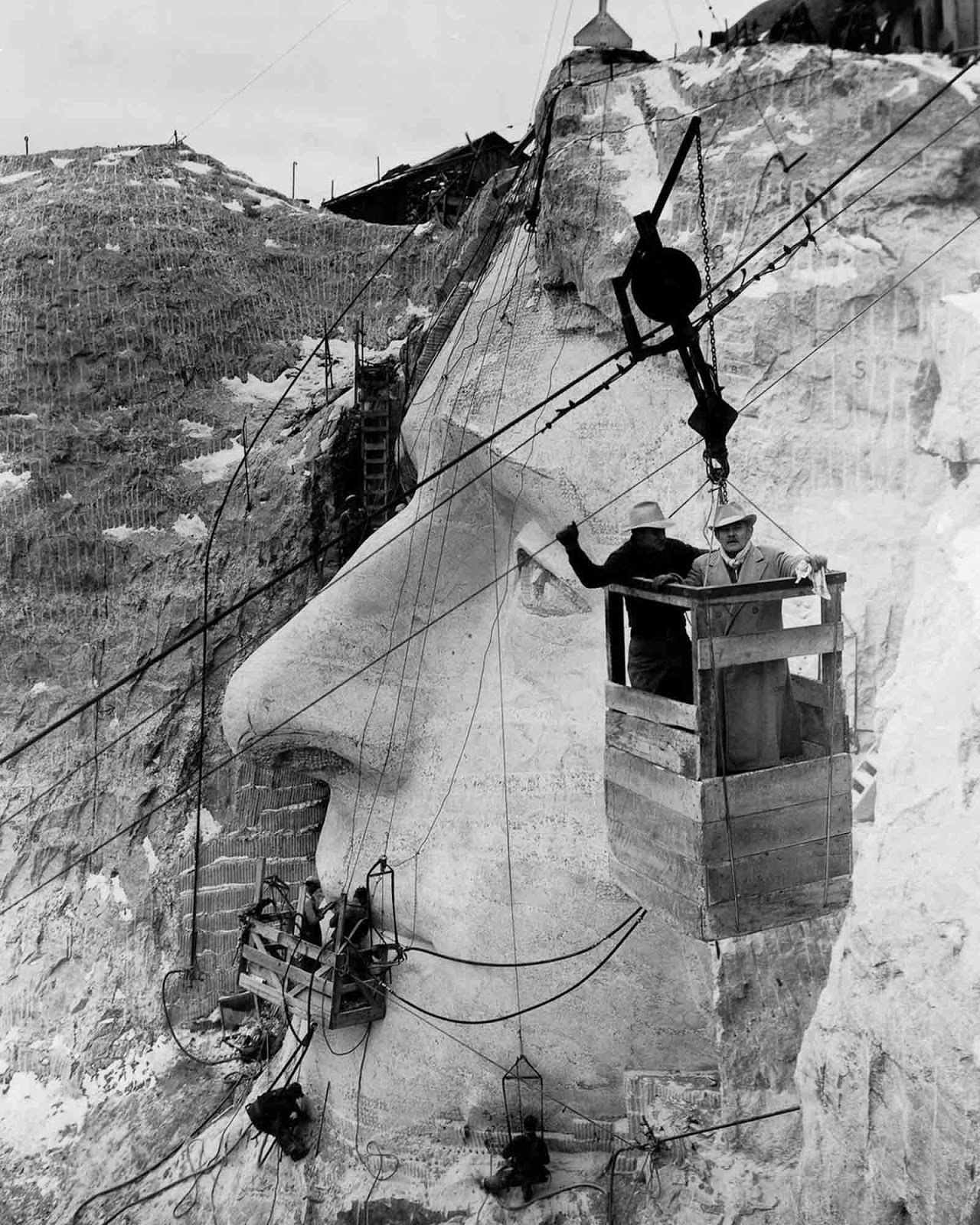
Moreover, Borglum faced the difficulty of securing consistent funding to support the growing project. By the late 1930s, the project was increasingly under the scrutiny of the federal government, as well as private donors who were vital to its continuation. Despite these challenges, Borglum’s commitment to his vision never wavered, and progress continued slowly but steadily.
One particularly poignant moment came in 1936, when sculptors worked on Jefferson’s eye. Borglum oversaw every detail, including this painstaking process of carving the intricate features of the monumental faces.
Completion of the Monument: The Final Touches (1940-1941)
The construction of Mount Rushmore was tragically cut short with the death of Gutzon Borglum in March 1941. He passed away just a few months before the monument’s completion. Following Borglum’s death, his son, Lincoln Borglum, took over the project and oversaw the final touches, including completing the faces of Roosevelt and Lincoln. Despite the loss of the project’s visionary leader, Lincoln Borglum and the dedicated team of workers completed the monumental sculpture in October 1941, a testament to the hard work and dedication of all those involved.
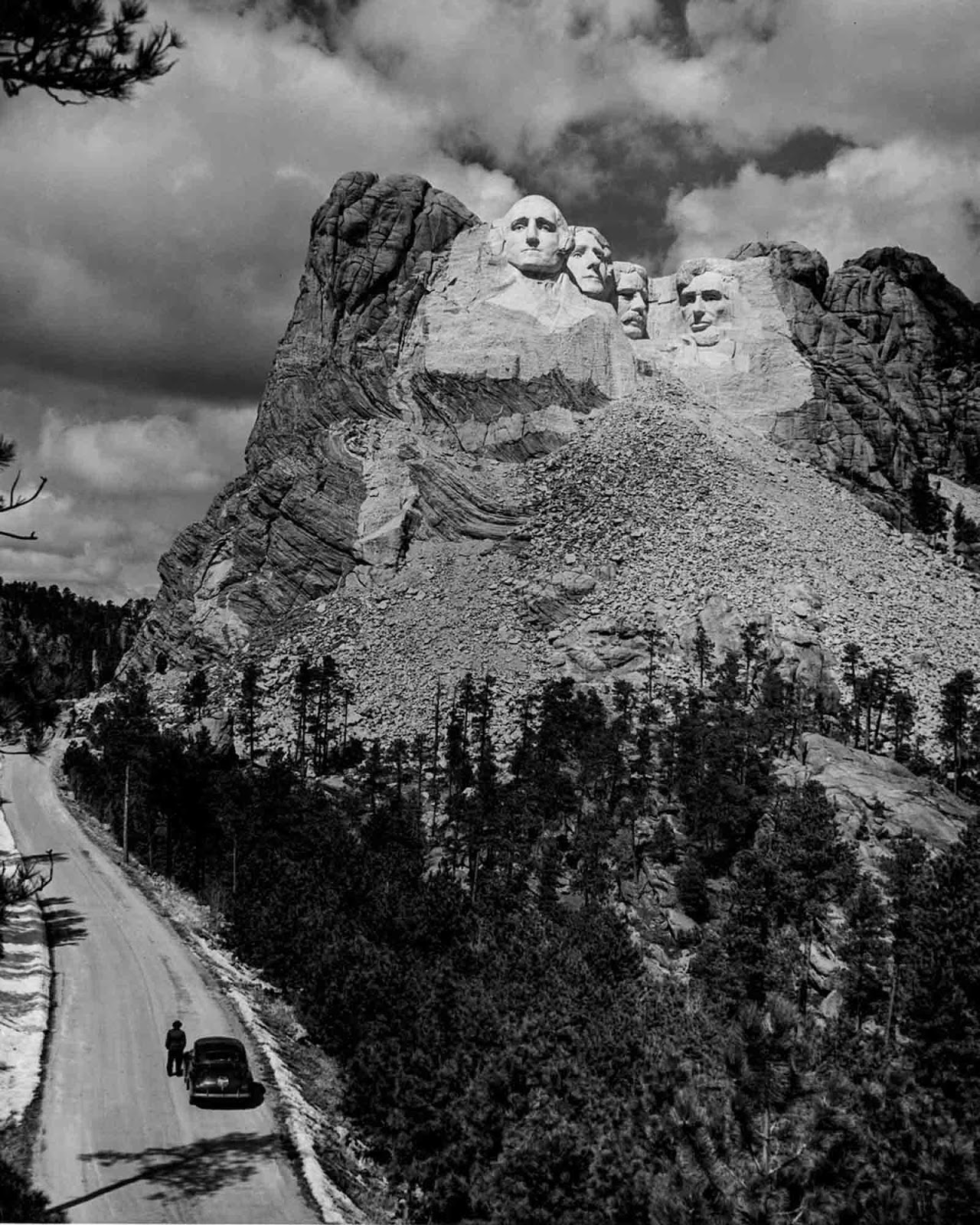
The dedication of the heads of the four presidents—Washington, Jefferson, Roosevelt, and Lincoln—became a symbol of American democracy, leadership, and unity. However, the monument’s significance goes beyond just its artistic and engineering accomplishments. It reflects the very essence of the American identity during a time of economic turmoil and political change.
Iconic Moments in History: Rare Photographs of Mount Rushmore’s Creation
The rare photographs taken during the construction of Mount Rushmore offer us a glimpse into the laborious work and determination that went into creating the monument. In these historical images, we see Gutzon Borglum and his workers in action—hanging from ropes and working meticulously on the faces of the presidents. The dynamite blasts and the use of large equipment are also vividly captured in these photos, highlighting the scale and intensity of the project. The images show the progress at different stages of construction, from the early days of blasting the mountain to the more detailed work in the final years.
These photographs not only document the physical work involved but also give us a sense of the immense effort and dedication required to bring Borglum’s vision to life. The workers themselves, many of whom were skilled laborers and artists, can be seen in these photos performing feats of great skill and endurance as they carved the faces of the nation’s most prominent figures into solid granite.
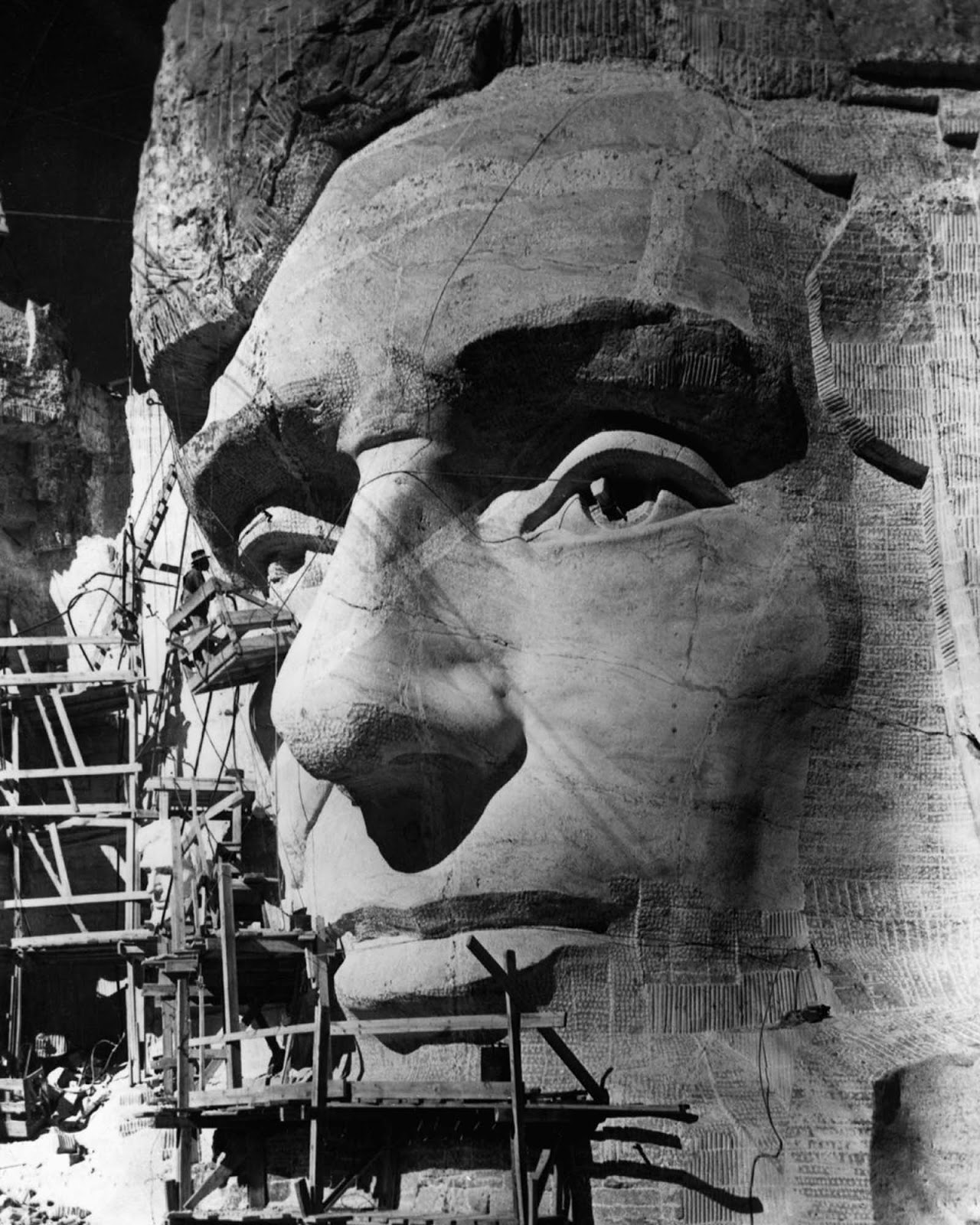
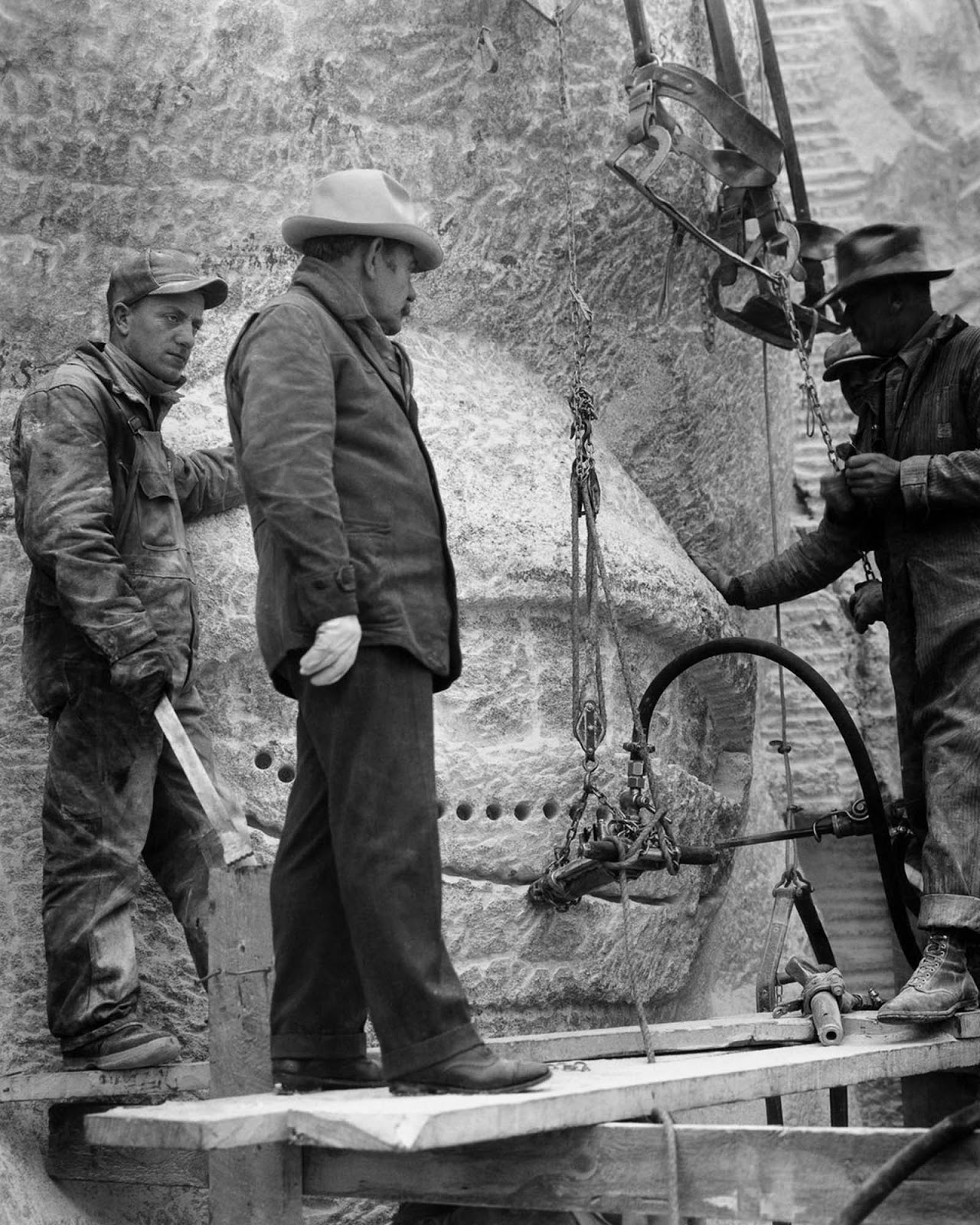
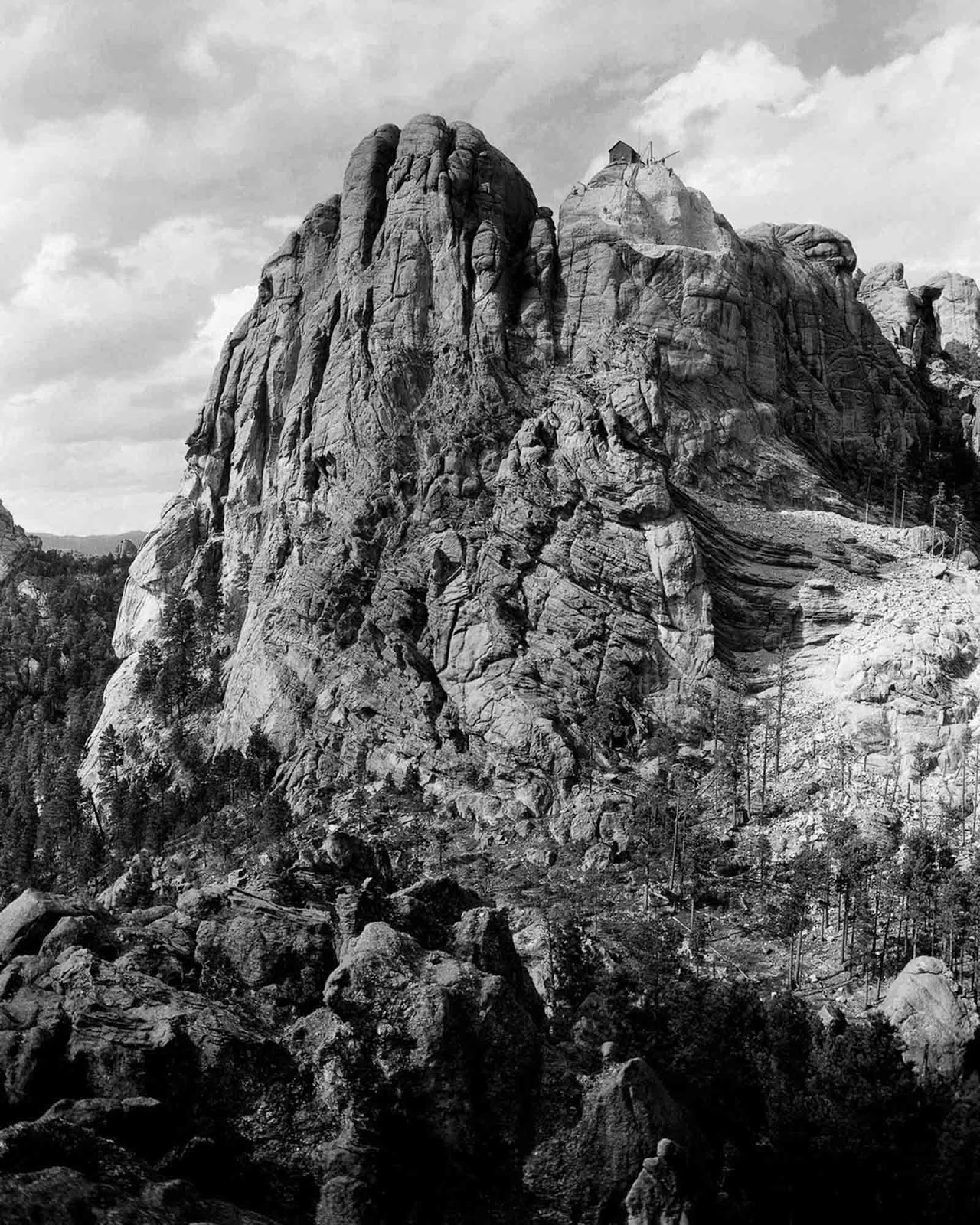
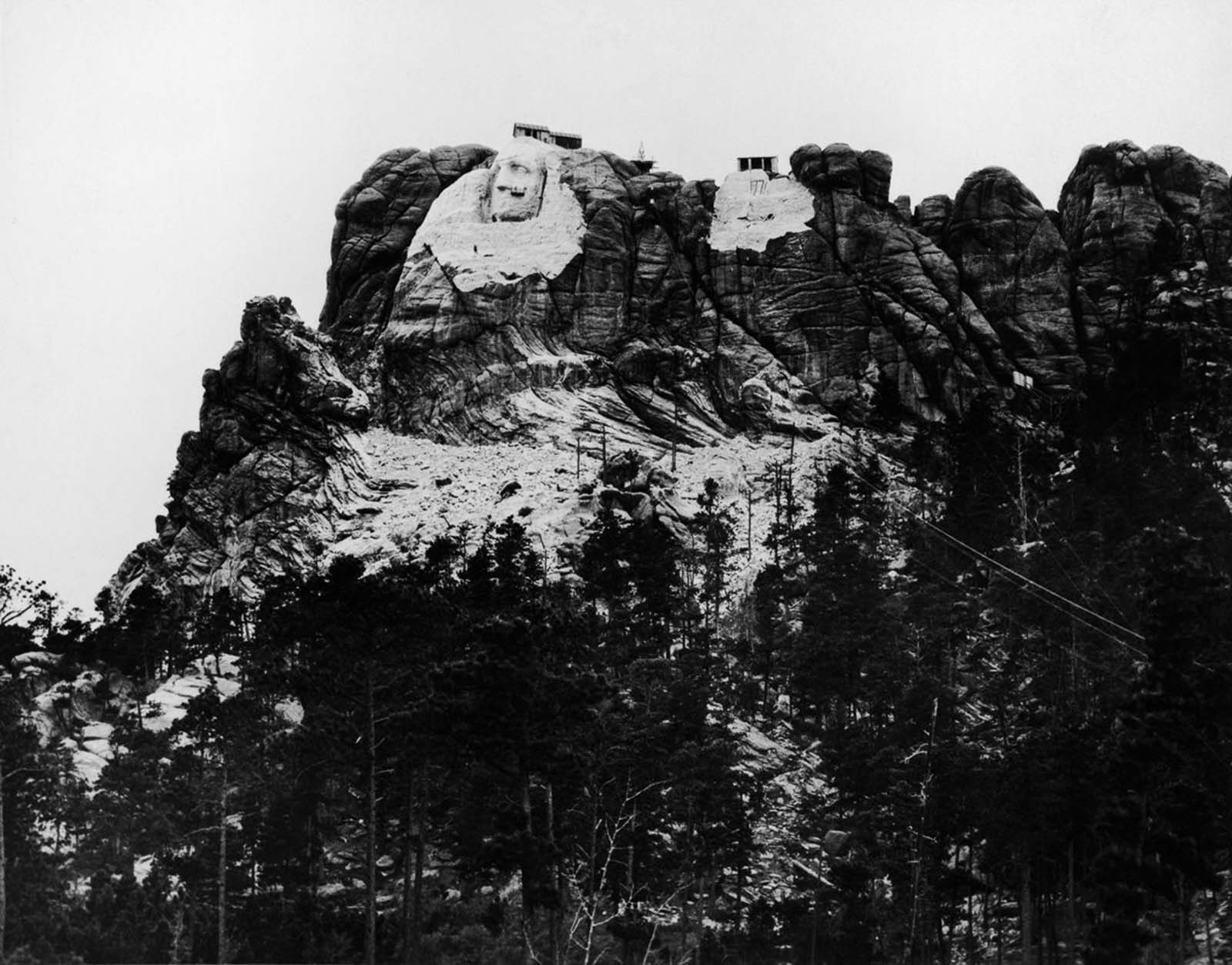
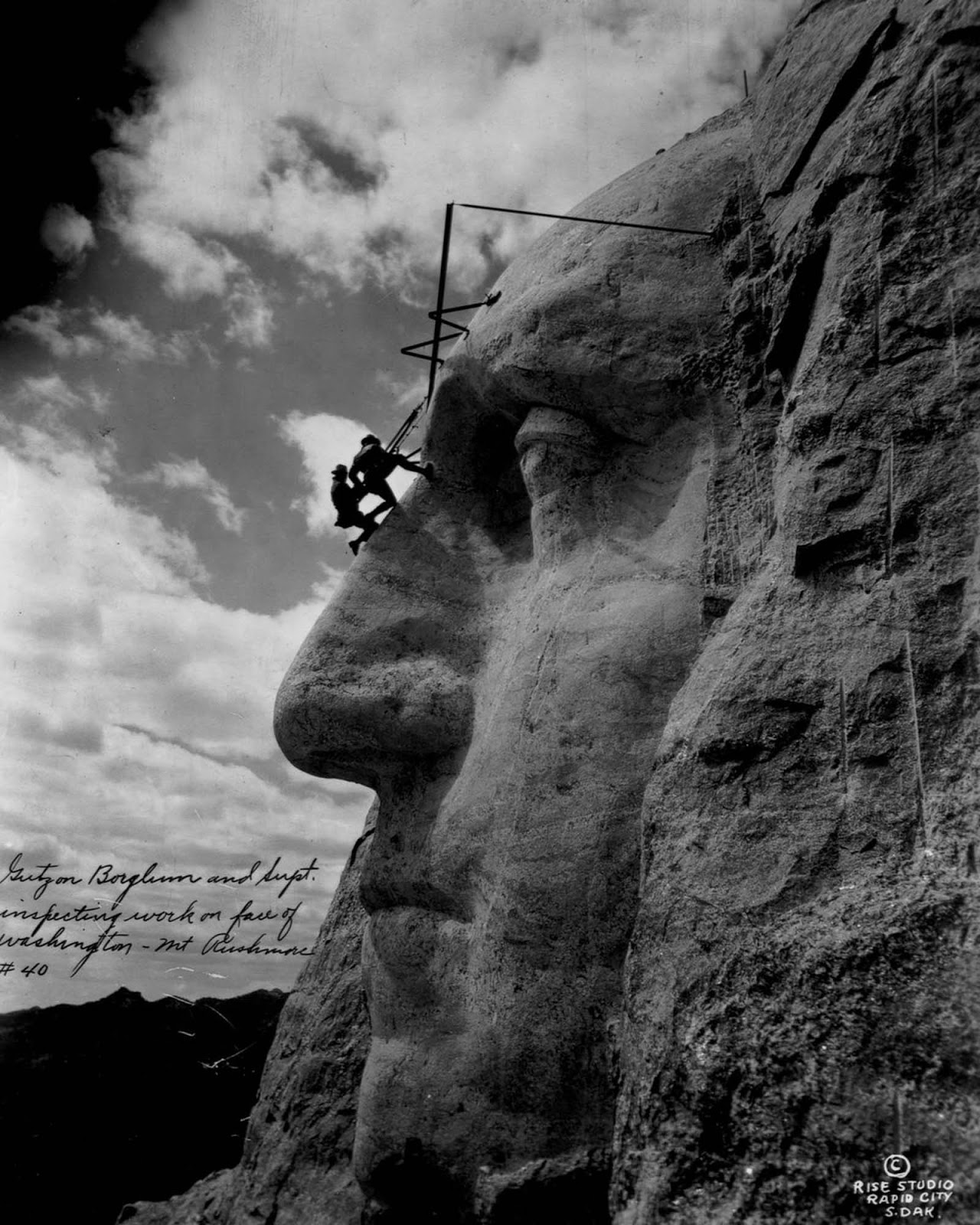
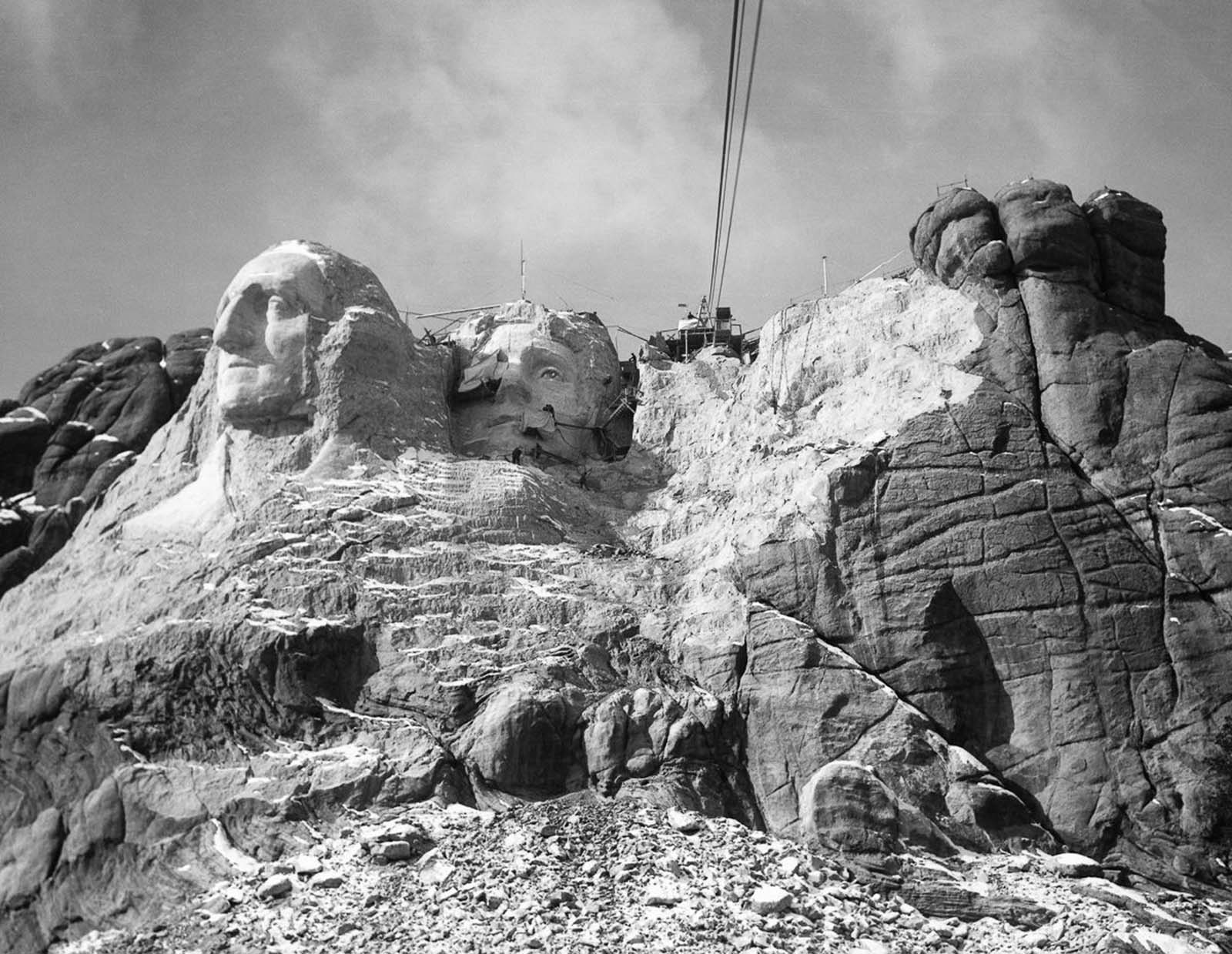
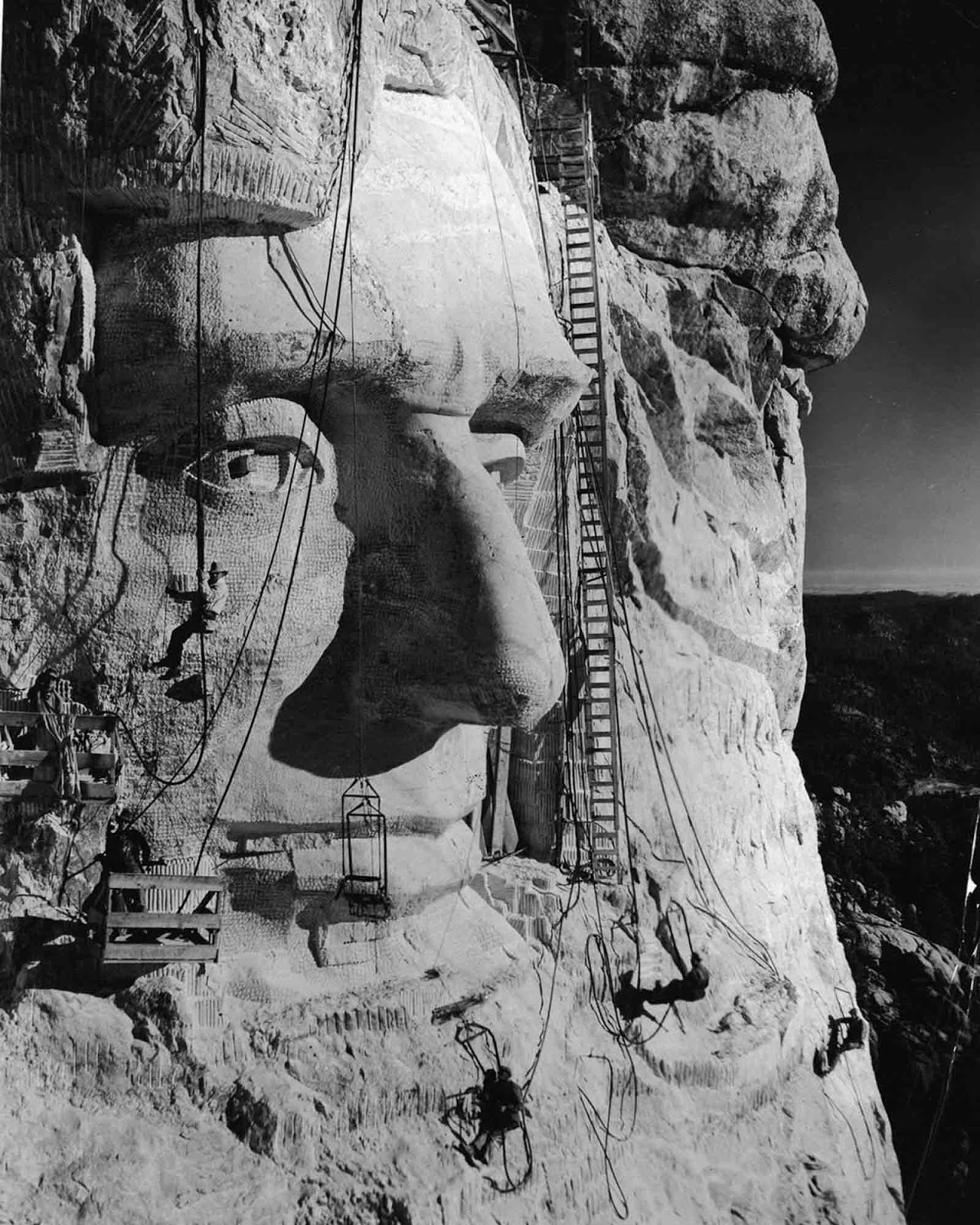
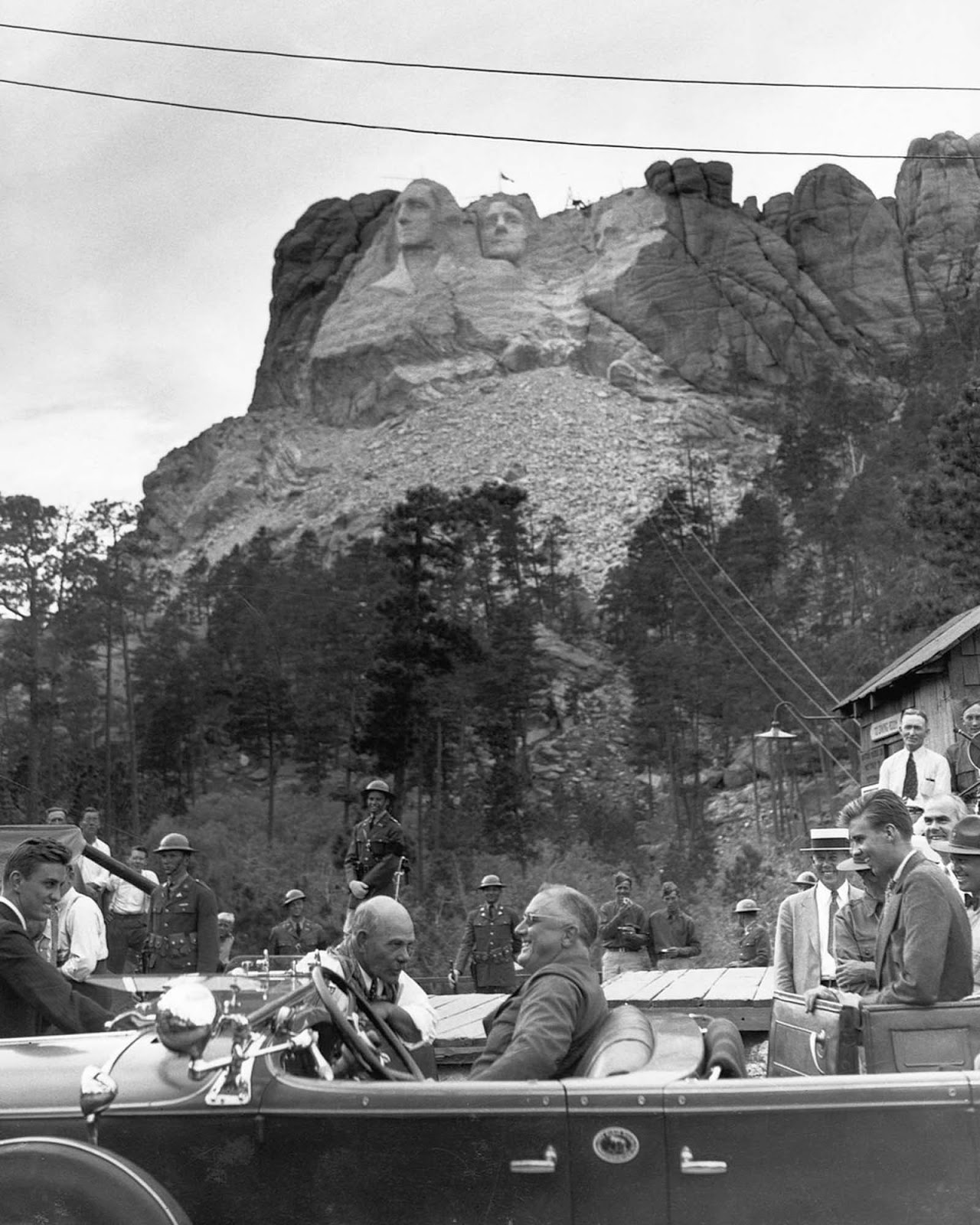
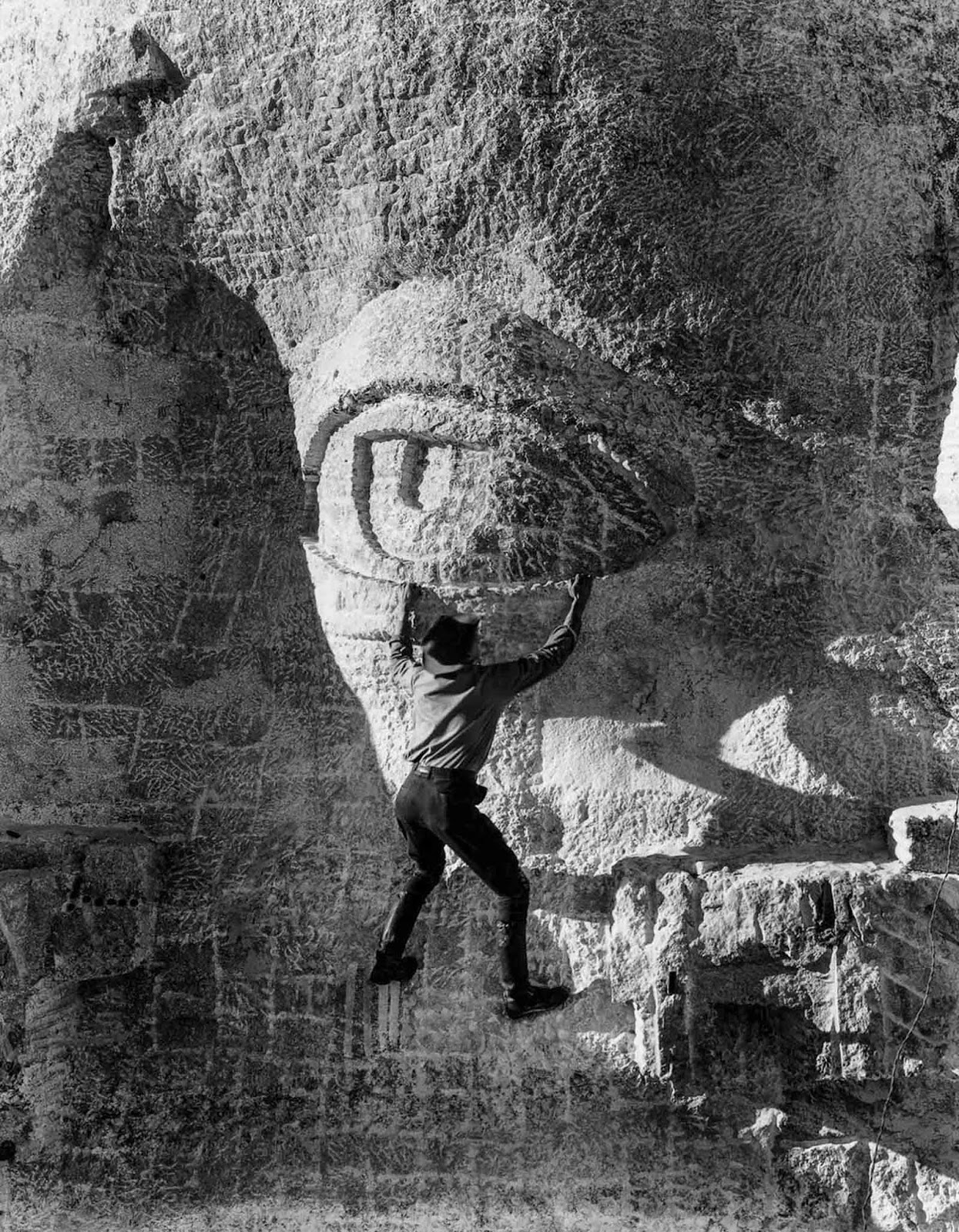
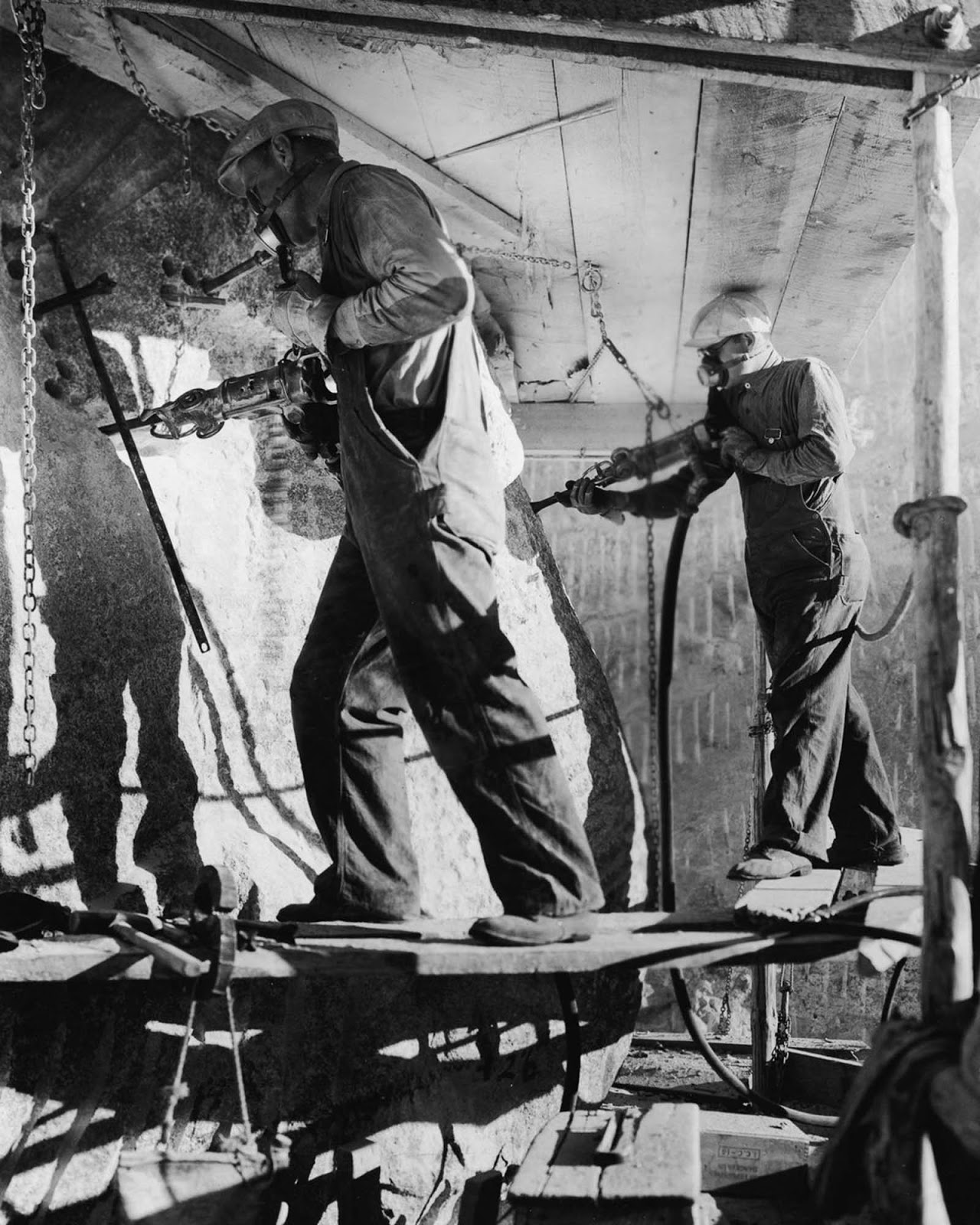
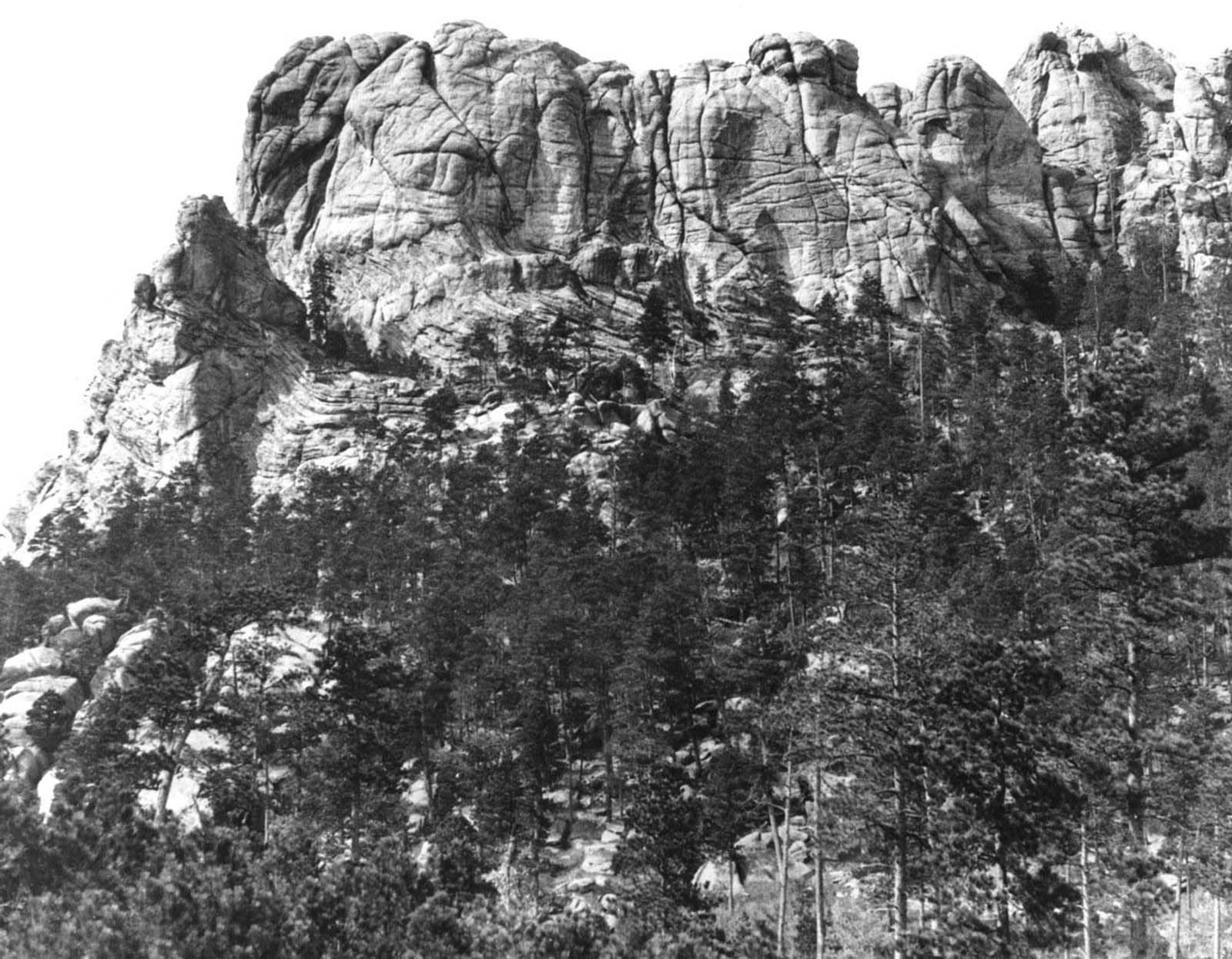
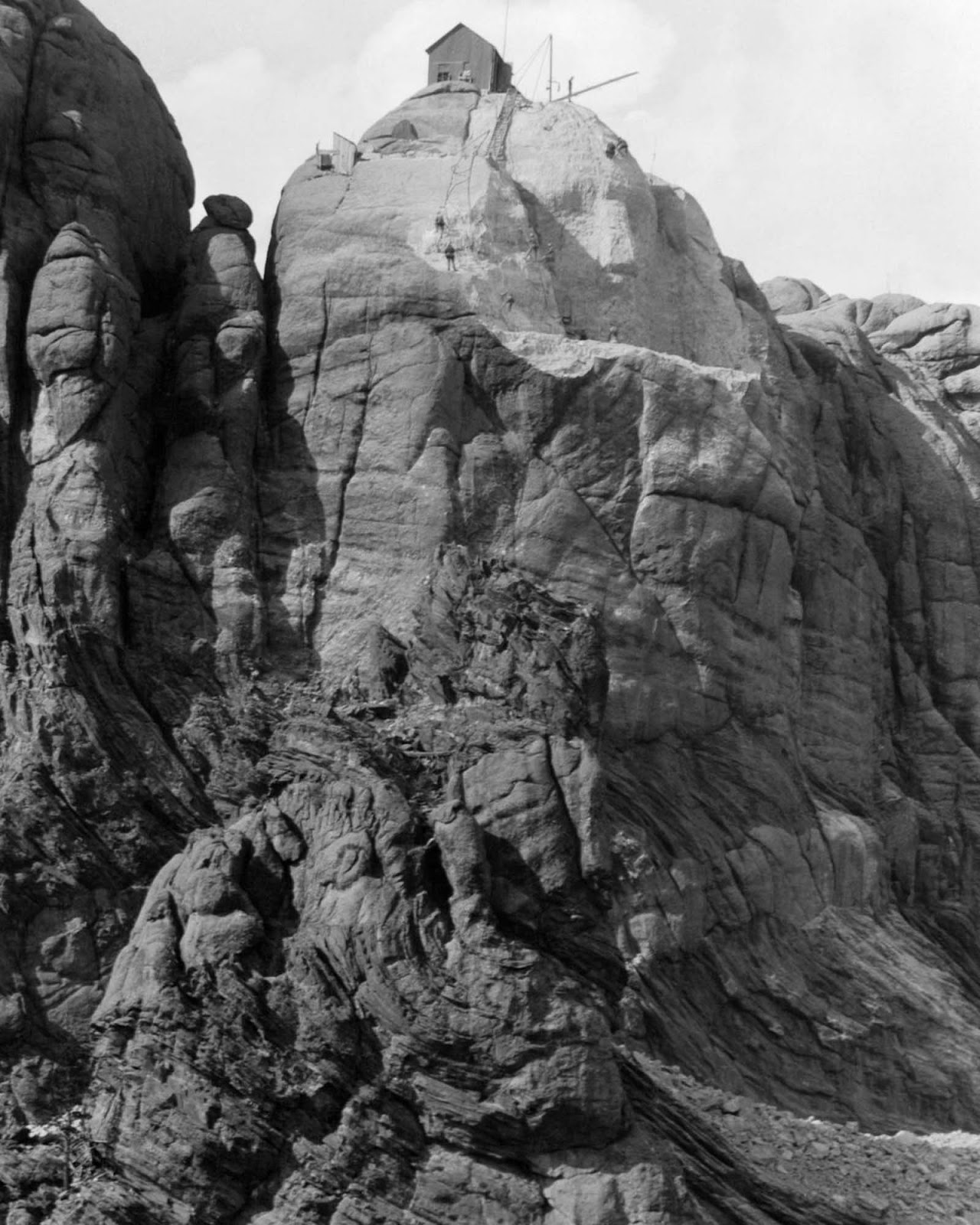
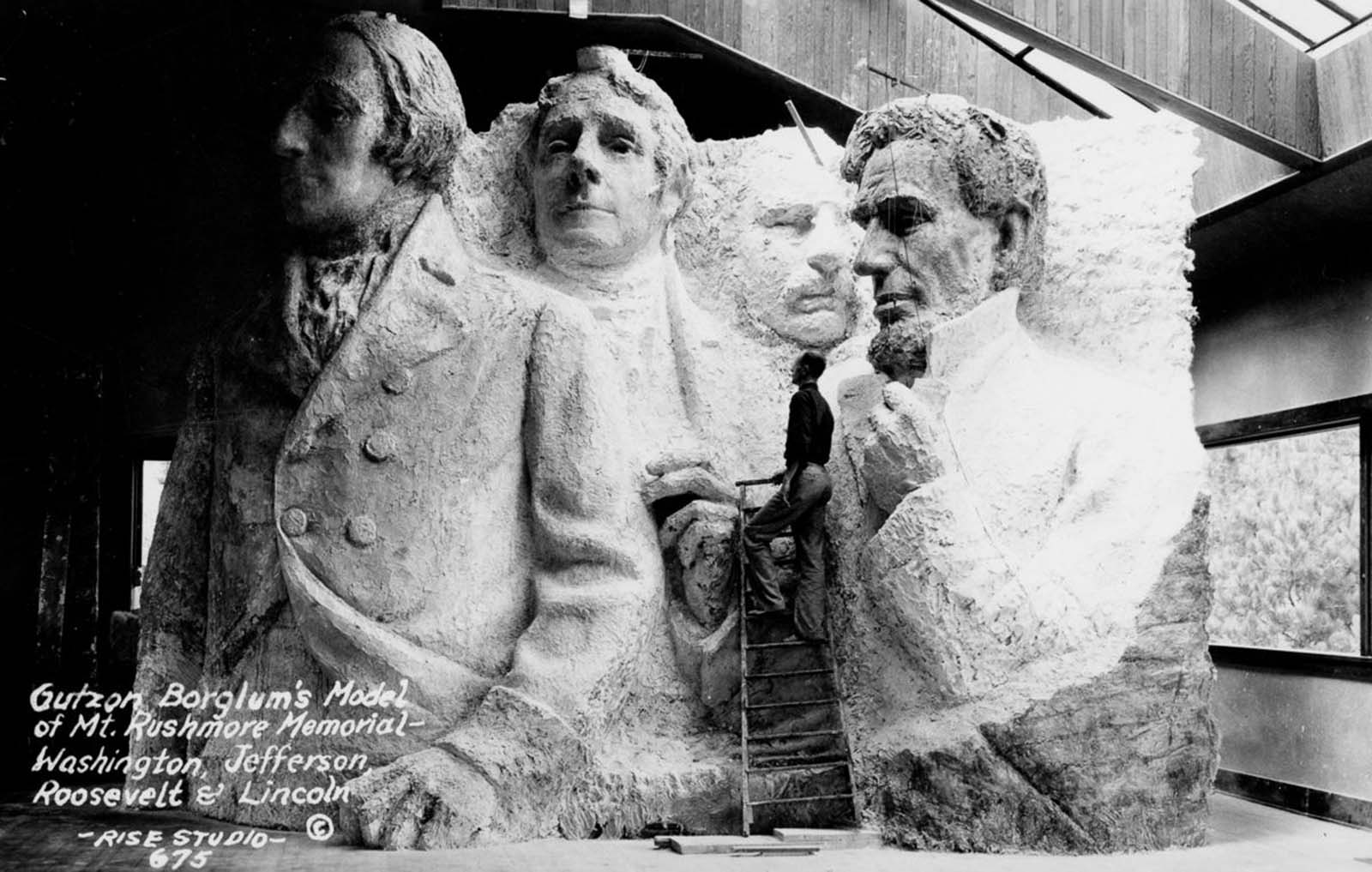
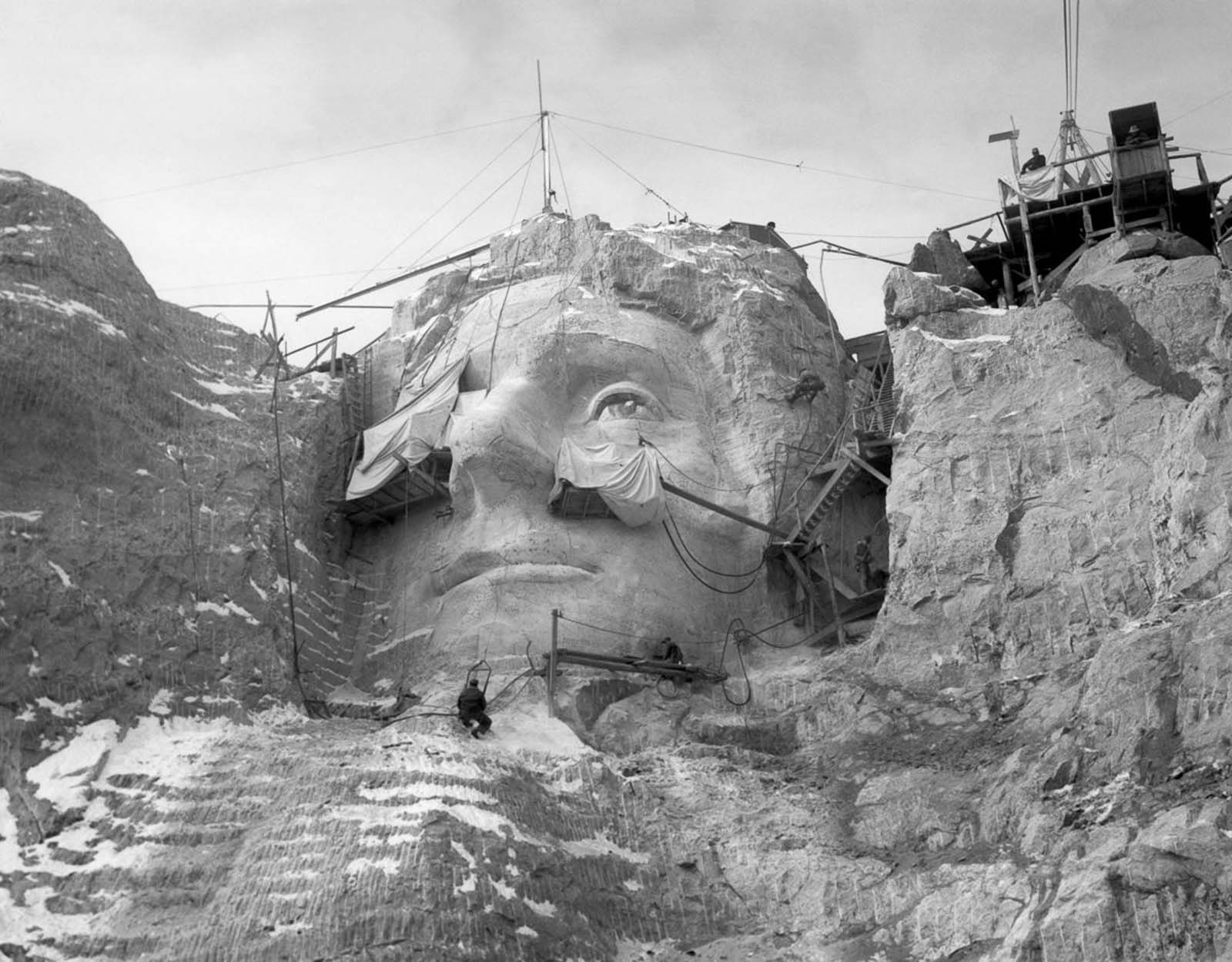
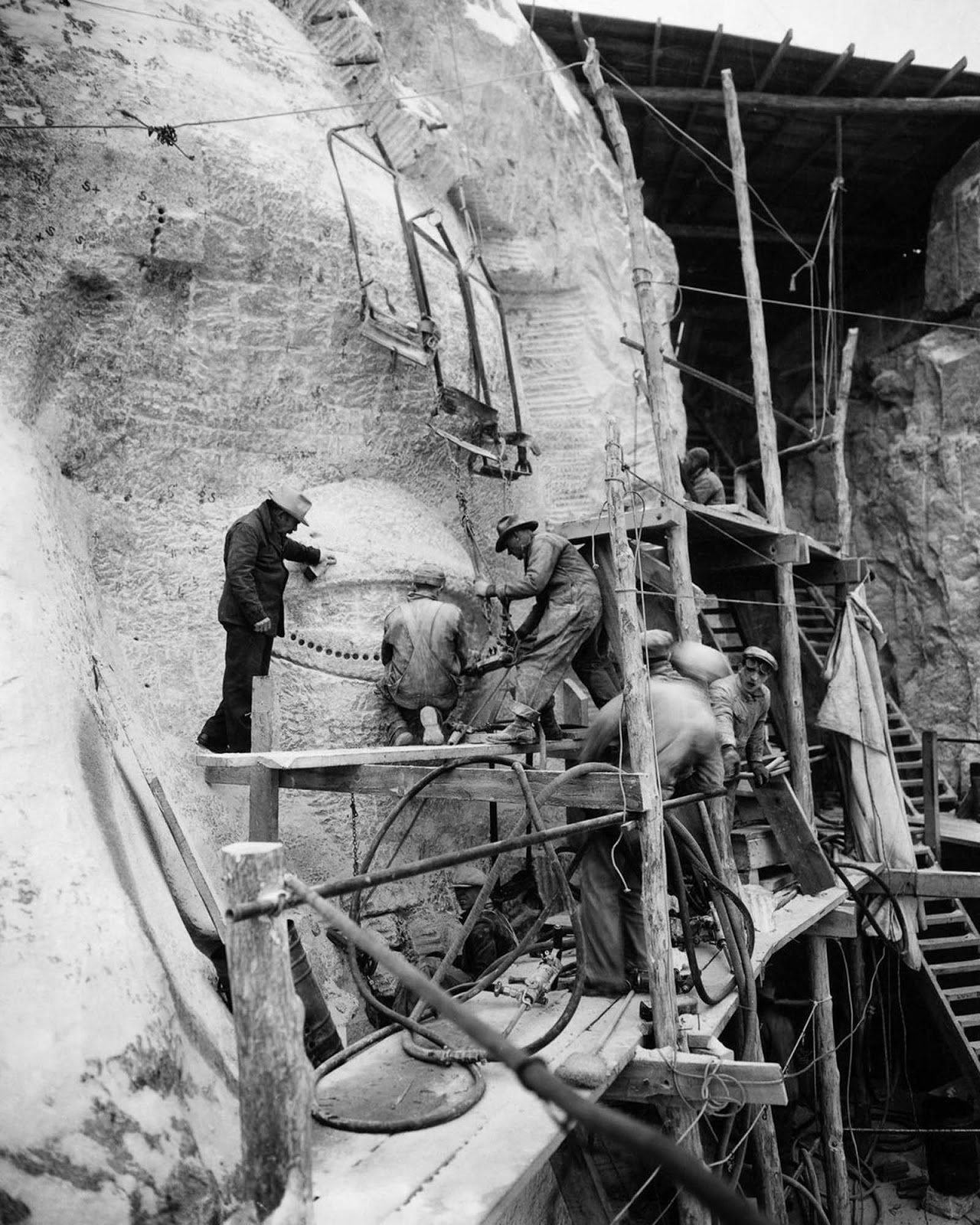
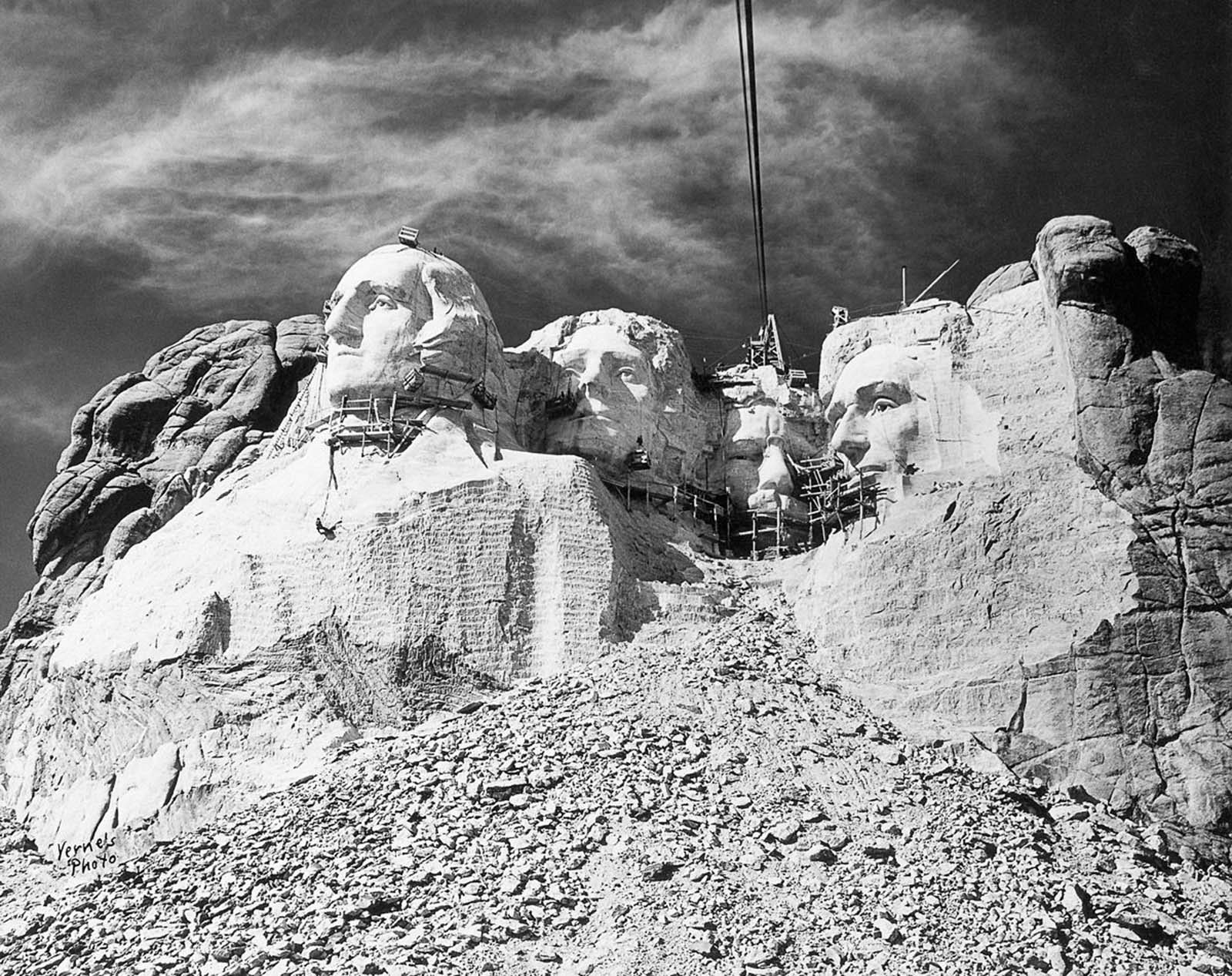
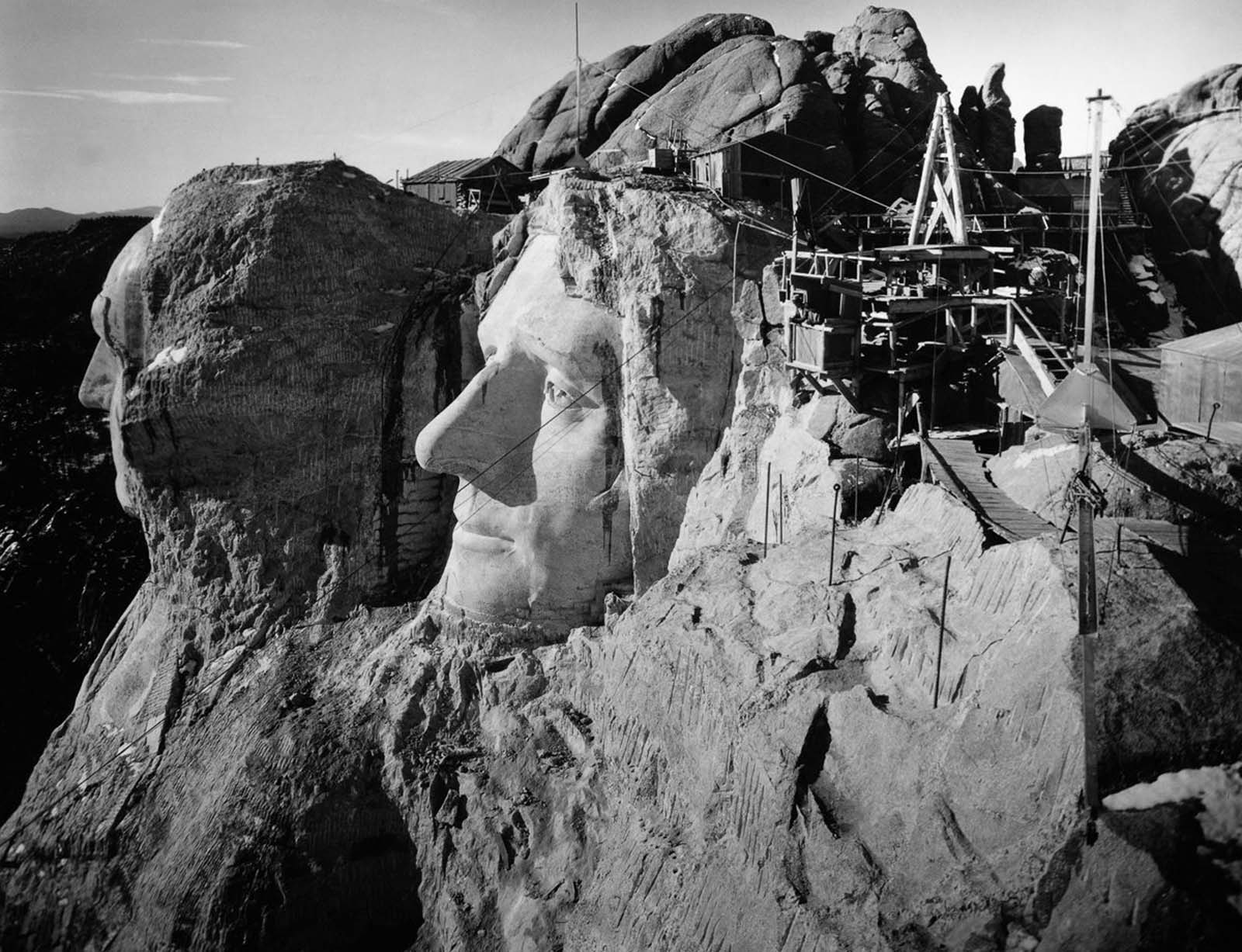
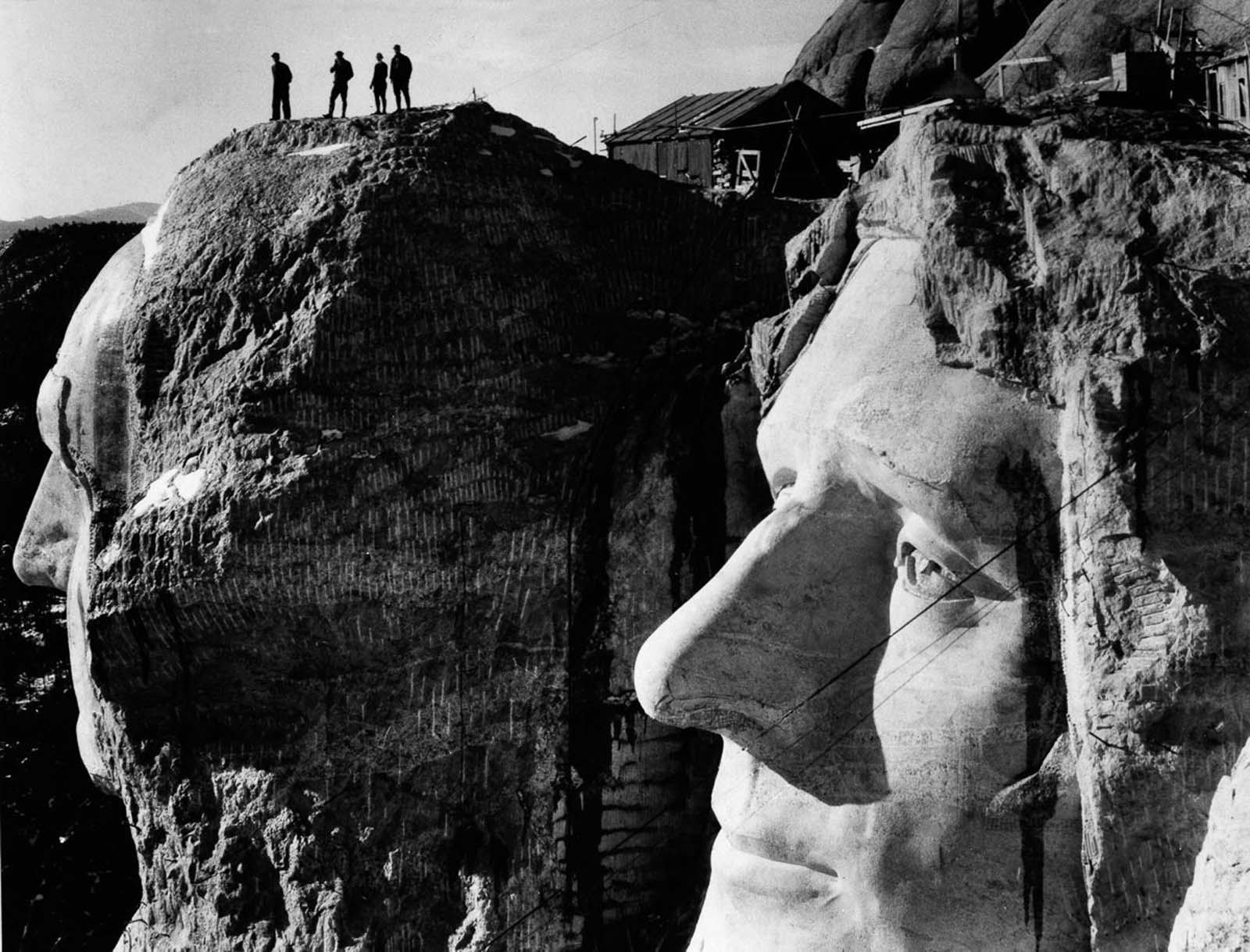
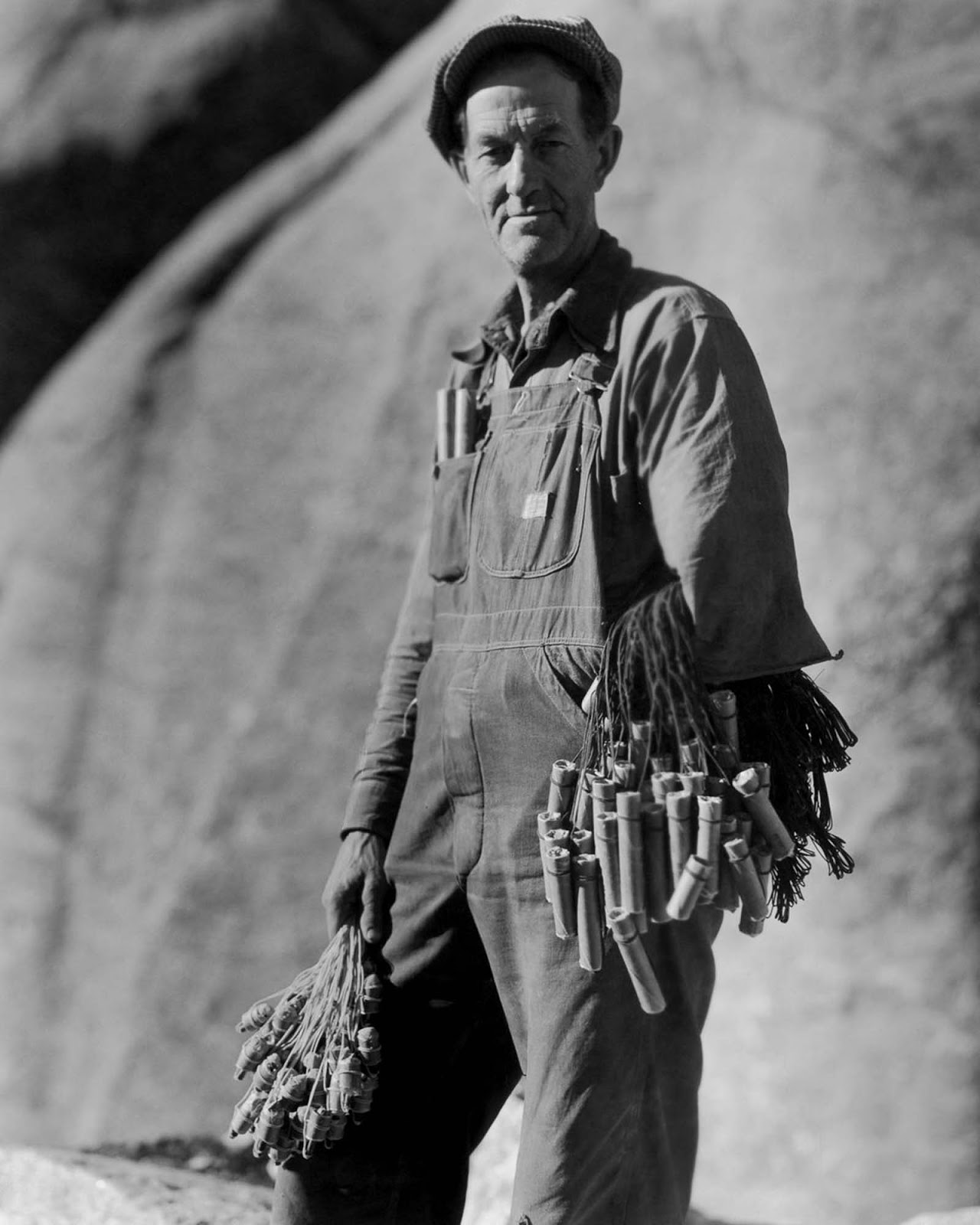
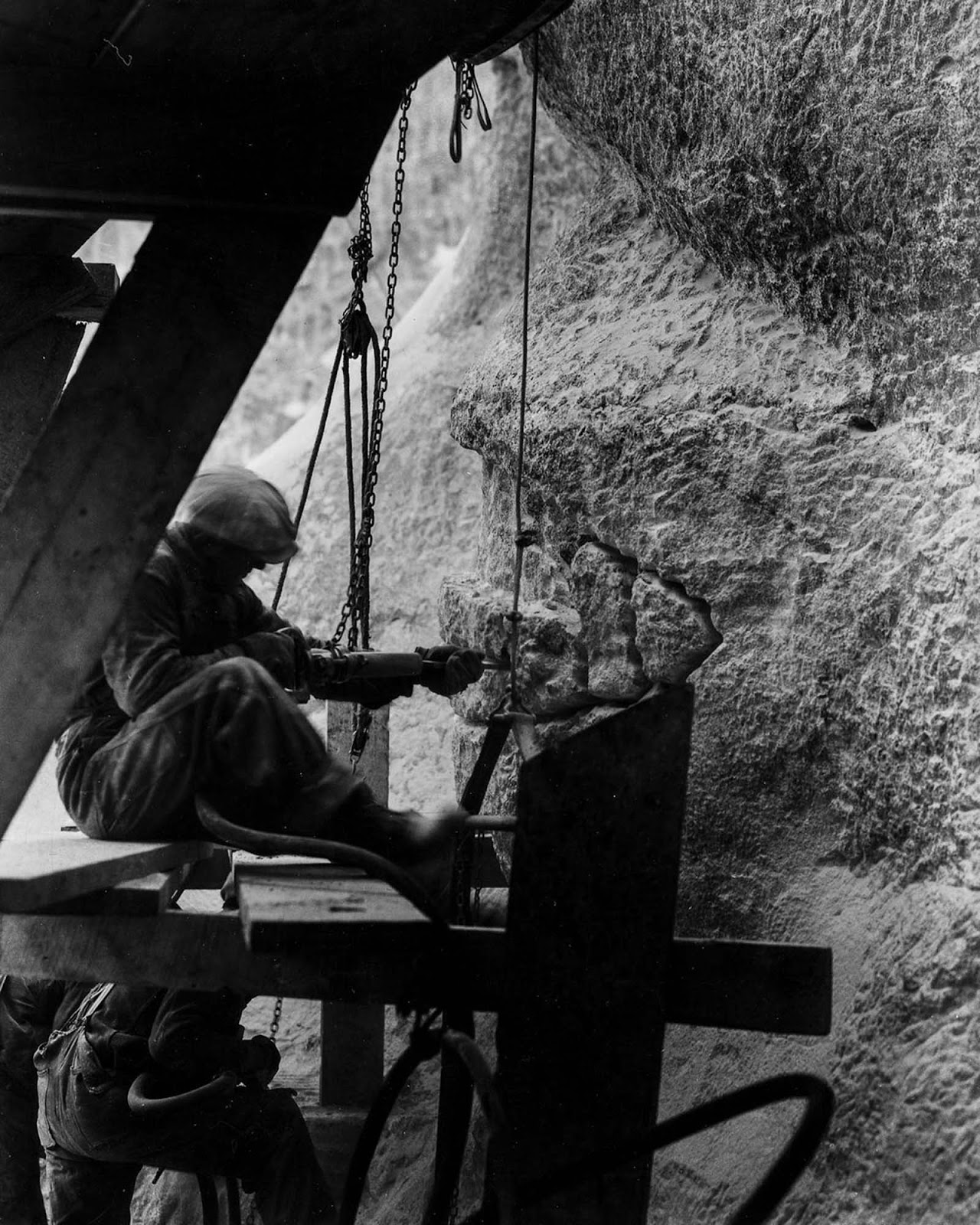
The Legacy: Mount Rushmore’s Cultural and Political Impact
While Mount Rushmore is an iconic American symbol today, its history is also intertwined with the legacy of the Native American tribes who originally inhabited the Black Hills, particularly the Lakota Sioux. The construction of the monument on their sacred land has been a source of ongoing controversy. The U.S. government’s forced removal of Native American tribes from the area, including the 1890 Wounded Knee Massacre, is a painful chapter in the story of Mount Rushmore’s creation.
In 1980, the U.S. Supreme Court ruled that the Lakota Sioux had not been fairly compensated for the land they lost, including the Black Hills. Mount Rushmore, while a symbol of American ideals, remains a reminder of the struggles of the Native American people.
Video
Explore the dark history of Mount Rushmore in this video featuring Ned Blackhawk and Jeffrey D. Means, as they delve into the destruction of the sacred Six Grandfathers Mountain.
Conclusion: A Monument That Endures
Mount Rushmore stands today as one of the most visited and iconic monuments in the world. Its creation, documented through rare and stunning photographs, showcases the immense effort, vision, and labor that went into carving the faces of four U.S. presidents into the granite cliffs of South Dakota. While the monument symbolizes American ideals of democracy and freedom, it also reminds us of the struggles and injustices faced by Native Americans. The legacy of Mount Rushmore continues to inspire awe and reflection, making it a powerful symbol of both the accomplishments and complexities of American history.

